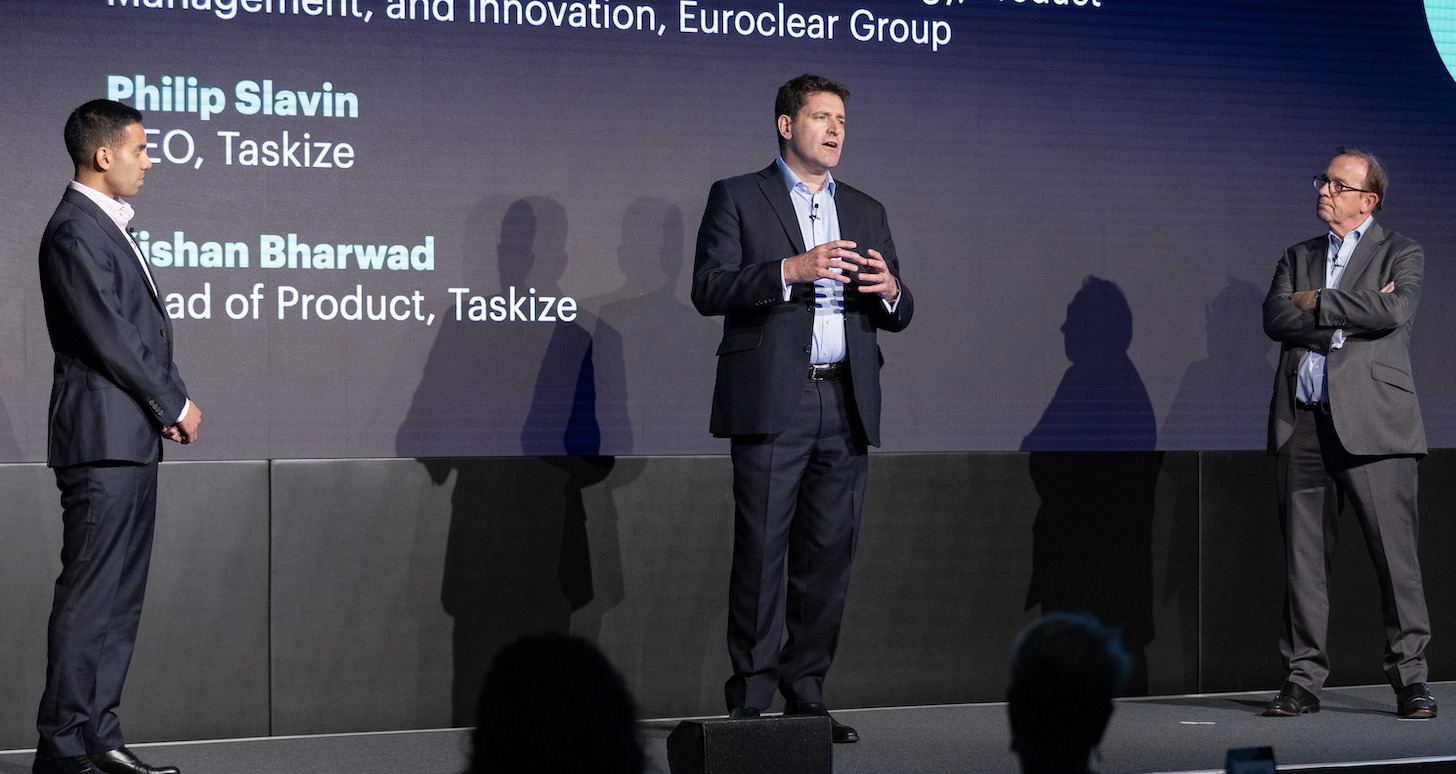Insights
Taskize at ISITC 2025: Driving innovation and efficiency in securities ops
Read our key takeaways from ISITC 2025
Interoperability is often spoken about at length by tech vendors, but it then seems to land on the ‘to-do list’ of financial firms as an additional challenge to tackle. Why is this?

At Taskize’s recent presentation at Symphony Innovate, CEO Philip Slavin took to the stage to pick up on a theme we’ve presented at several recent industry events, not least ISITC and SIFMA.
It’s the question of interoperability – not necessarily the need for, or the benefits thereof, but the question of responsibility. To paraphrase Philip’s presentation, interoperability is often spoken about at length by tech vendors, but it then seems to land on the to-do list of financial firms as an additional challenge to tackle.
Why is this? Surely, if fintechs are creating time- and budget-saving systems then the onus should be them to work together and make sure they are as interoperable as possible. And then – to go one stage further – to prove this point and demonstrate it to the market with finished, easily-integrable systems and clear use cases.
Over to Philip Slavin to explain more, and to illustrate this point from the perspective of Taskize’s latest partnership with Symphony.
I’ve been in the audience at Symphony Innovate for the last few years, so it’s great to be up on the stage. For those of you that don’t know, Taskize provides intercompany workflow: we’re focused on operations, specifically when an individual needs to reach from one firm into another to resolve an issue, a dispute, an exception break, or any other piece of work.
By using Taskize, organizations are seeing a 70% reduction in issue resolution time, and a reduction of 90% of their operational email workload. All of which leads to a three times improvement in productivity. We’ve been active for seven years now, and have just north of 550 clients operating out of 88 countries.
So that’s Taskize. But why is this question of interoperability so important?
Not only between interoperability Taskize and Symphony but also between providers across the fintech landscape in general. It’s a question everyone seems to ask each other and asks us at the same time, too.
It’s our responsibility, I believe, as vendors – as providers of service to you – to answer that question for you. You shouldn’t be sitting there asking, “Well, I’ve got these different platforms but how do they work together? And when should I best use each one?”
It is our responsibility to be able to provide that connectivity, demonstrate those use cases, and answer those questions for you.
You should not have to ask, “Am I going to use Symphony? Or am I going to use Taskize?” We should be able to answer the question for you.
And, as a result, you’ll then know that – in any particular use case, for any particular platform – we can maintain proximity between users via seamless integration. And all because we’ve taken that on as our own responsibility.
We can illustrate this by demonstrating what we think is a very common use case in operations today. A use case where you have 1 issue that has to be resolved by 2 firms across 3 different platforms. It’s that typical ‘1-2-3’ scenario that Taskize/Symphony integration delivers on.
Built on the foundation that interoperability is the responsibility of providers, not the clients.